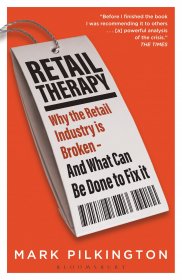The Impact Of Coronavirus On Retail – Threat Or Opportunity?

The government’s shutdown of all non-essential retailing on 23 March 2020, in response to the threat from the Coronavirus has sent shockwaves through the retail industry.
Retail sales dropped a record 5.2% in March, and the situation is likely to worsen sharply as the lockdown drags on. A recent study by Alvarez & Marsal has predicted that non-food retailers could see a decline in sales of 17% over the whole of 2020 – equating to over £37 billion of lost revenue.
Already we have seen the first casualties, with Debenhams, Oasis, Warehouse, LK Bennet, Laura Ashley and Cath Kidston going bust, and Arcadia Group rumoured to be on the edge.
The main beneficiaries of the store closures have been retail’s e-commerce rivals – for example the most recent ONS figures show that online sales increased 12% year on year in March 2020, boosting its share above 22% of the market.
Many consumers have got used to the convenience of home delivery, and they may not go back to their old habits that easily.
If nothing is done, when the shops reopen, they may find that their customers have disappeared.
In this scenario, we are certain to see more bankruptcies, store closures and layoffs. If nothing changes, the consequences for employment will be dire: retail is a huge employer of women, minorities and young people – some of the most economically vulnerable groups in society.
And it will not only be the retailers that suffer, but the brands which depend on them and the retail property groups which own the malls and shopping centres. Already we have seen Intu, owner of Trafford Centre and Lakeside, teetering on the verge of bankruptcy.
The only thing that can save this important industry is a complete re-set.
Retailers need to face the fact that most shopping experiences are not great. The stores are often unattractive; there is poor product sign-posting, and when you do locate what you want, it is often out of stock. Finally there is a lack of properly-trained staff to help you.
And this is on top of having to get to the store, over congested roads or public transport networks, pay expensive parking and carry the heavy goods home with you.
Compare this with the easy process of buying online – complete with efficient search engines, well-laid-out product pages, one-click check-out and delivery to your door – and it becomes apparent that stores no longer have an advantage over online, in terms of the pure process of moving goods from factories to consumers.
And to cap it all, buying online is usually cheaper, as the e-commerce operators pay less in rents, rates, store build expenses and staff costs.
In order to give consumers a reason to buy in stores, retailers have to offer something extra, over and above the pure provision of goods.
There are four things that retailers can do to put the joy back into the in-store experience:
- Create brand theatre: to do this they need to shift space away from stocking things and use it to create spectacular displays that make the store a pleasure to visit. Nike Town and Selfridges are a good examples of this.
- Treat the stores as ‘club houses’ for the brand community, by hosting events and gatherings that bring people together. Lululemon, which holds free yoga classes in-store and Rapha Cycling, which offers free coffee and biking trips are good role models for this.
- Provide exceptional customer service – the human element is potentially a major advantage, so it needs using correctly. The secret is fewer, better paid and more expert staff – more like personal shoppers than temps. More space and effort needs to be devoted to the customer service area, with comfortable seating, luxurious fitting rooms and free refreshments.
- Educate the customer – People love to learn about the provenance of the goods, and see how they are made.
In order to pay for all of this, retailers need to economise on non-essentials. Chief among these is having a lot of space and staff time devoted to stock holding and processing. 90% of store space is currently occupied by inventory, and over 50% of staff time is spend on stock-related and other basic activities.
The key thing for retailers to do is to think of themselves as multi-channel operators, and to use each channel for what it is good at: the internet for stocking, displaying and shipping goods, and stores for brand marketing and service.
In practice this means that stores would carry limited stocks of their bestsellers, and use technology to demonstrate the rest. They would take the orders on screens, and then ship the goods directly from their warehouses to the customers’ homes without going through the store.
Without all that stock, stores could be smaller and lower cost, and without all the stock processing and administration, the staff team could be smaller and higher quality. Ikea and Nordstrom in the US are good examples of retailers who are opening smaller stores, aimed primarily at customer service and brand display.
So, in summary, the lockdown is a terrible threat to old-style stores. However, if used properly as a time of reflection, it may provide an opportunity for smart retailers to re-invent their businesses and re-emerge with something fresh and compelling for the future. For the sake of the three and a half million people who work in the industry, it is to be hoped that they do.
Mark Pilkington’s book Retail Therapy: Why The Retail Industry Is Broken – And What Can Be Done To Fix It is available in paperback from 28th May 2020. Available at all good bookshops and at Bloomsbury.com.





